Garmin inReach Mini 2 tested for 8 months across Michigan’s harshest conditions—battery life, subscription plans, SOS reliability, messaging performance, and definitive comparisons to help you decide
TESTED Updated October 2025
We’ve field-tested the Garmin inReach Mini 2 through eight months of real-world scenarios—sub-zero winter camping, summer backcountry adventures, and emergency simulations. This comprehensive review delivers battery life data, subscription guidance, SOS reliability testing, and honest comparisons to help you make an informed decision about satellite communication.
Shopping for a satellite communicator but overwhelmed by subscription costs and technical specs? You’re not alone. The Garmin inReach Mini 2 promises global two-way messaging and emergency SOS, but at close to $300 plus mandatory monthly fees, you need to know if it’s worth the investment.
Here’s the truth: Most buyers either underestimate how much they’ll actually use satellite messaging, or they choose the wrong subscription plan and waste hundreds of dollars annually.
After eight months testing the Garmin inReach Mini 2 through Northern Michigan’s demanding conditions—from -15°F winter camping to summer multi-day backpacking trips—we’ve documented real-world battery life, messaging reliability, and subscription costs to show you exactly what you’re getting.
This guide cuts through Garmin’s confusing subscription tiers, compares the Mini 2 to competitors like Zoleo and SPOT, and delivers the honest pros and cons you need to make an informed decision.
Garmin inReach Mini 2: Quick Specs
Key specifications verified through independent field testing, October 2025.
| Specification | Mini 2 Value | Real-World Notes |
|---|---|---|
| Weight | 3.5 oz (100g) | Lighter than iPhone 15 Pro |
| Dimensions | 2.0″ x 3.9″ x 1.0″ | Fits in shirt pocket |
| Screen Size | 1.27″ (200×265 pixels) | Readable in direct sunlight |
| Battery Life (Claimed) | 14 days (10min tracking) | See real-world testing below |
| Water Rating | IPX7 (1m for 30min) | Survived full submersion tests |
| Satellite Network | Iridium (100% global) | Works anywhere with sky view |
| GPS Satellites | GPS, GLONASS, Galileo | Fast, accurate positioning |
| Charging | USB-C | 2.5hrs full charge |
| Current Price | Check sale price below | Plus subscription required |
What You Get
Package Contents:
• Garmin inReach Mini 2 device (Orange or Flame Red)
• USB-C charging cable
• Carabiner clip
• Quick start guide and documentation
Build Quality: The Mini 2 feels substantially more rugged than expected. The rubberized exterior survived repeated drops onto rock (from waist height), full submersion in Lake Michigan for 30 minutes, and exposure to -15°F temps with zero performance degradation. The four side buttons provide tactile feedback even with heavy gloves.
First Impressions: At 3.5 ounces, the Mini 2 disappears in your pack. The included carabiner clip is genuinely useful—we kept it clipped to a shoulder strap for instant access. Screen visibility exceeds expectations in direct sunlight, crucial for navigation features.
Garmin inReach Mini 2 features walkthrough and hands-on demonstration—tested by Outdoor Tech Lab for real-world performance.
Subscription Plans Simplified (2025 Update)
Critical Info: Garmin changed subscription plans in September 2024, eliminating annual contracts and adding a “Suspend” feature. Understanding these options can save you $100+ annually.
The Garmin inReach Mini 2 requires an active subscription to access satellite features (messaging, tracking, SOS). Here’s what each plan actually costs and who they’re designed for:
| Plan | Monthly Cost | Messages Included | Best For |
|---|---|---|---|
| Enabled | $7.99 | Pay-per-use ($0.50 ea) | Emergency SOS only, minimal use |
| Essential | $14.99 | 50 texts + weather | Weekend hikers, occasional users |
| Standard | $29.99 | 150 texts, unlimited tracking | Frequent backcountry users |
| Premium | $49.99 | Unlimited everything | Professionals, expeditions |
| Suspend | FREE (up to 12 months) | No features active | Seasonal users between trips |
💡 Pro Tip: The “Enabled Plan” ($7.99/month) is Garmin’s best-kept secret. If you only need emergency SOS capability and send fewer than 15 messages per month, this plan costs less than half of Essential. Perfect for solo hikers carrying it “just in case.”
Activation Fee: $39.99 one-time charge (all plans). Cannot be avoided, even when switching between plans.
Real-World Cost Example: We used the Essential plan ($14.99/month) for 8 months of testing, sending approximately 35 messages per month (check-ins with family, weather requests). Total cost: $39.99 activation + $119.92 subscription = $159.91. For comparison, a satellite phone rental for the same period would cost $800-1200.
Suspend Feature: New as of 2025, you can pause your subscription for free (up to 12 months) without losing your account or paying reactivation fees. Game-changer for seasonal users. Simply log into Garmin Explore and select “Suspend” when you’re not using the device.
Battery Life: Real-World Testing
Garmin’s Claim: Up to 14 days in 10-minute tracking mode, up to 30 days in power-save mode.
Our Testing Results:
Summer Conditions (70-85°F, moderate tree cover):
• 10-minute tracking: 11 days before hitting 10% battery
• 30-minute tracking: 18 days
• With 5-8 messages per day: 8-9 days
• Standby mode (no tracking): 28 days
Winter Conditions (-5°F to 25°F, heavy forest):
• 10-minute tracking: 6-7 days (42% reduction!)
• 30-minute tracking: 12 days
• With messaging: 5-6 days
• Kept in interior jacket pocket vs external: +30% battery life
The Reality: Garmin’s battery estimates assume optimal conditions (clear skies, warm temps, stationary position). In real backcountry use with tree cover, cold temps, and active movement, expect 60-80% of claimed battery life. Still impressive—this outlasts any smartphone by 3-5x.
💡 Pro Tip: Battery drain accelerates dramatically when the device struggles to maintain satellite lock (dense forest, deep canyons). Use 30-minute tracking intervals in challenging terrain to double your battery life. For multi-week trips, pack a portable power station or solar panel.
Charge Time: USB-C charging from 0-100% takes 2 hours 25 minutes (tested with 20W adapter). USB-C compatibility means you can charge from power banks, laptops, or car adapters using the same cable as modern phones.
Messaging & Apps: What to Expect
Two-Way Messaging: The Mini 2 sends/receives 160-character text messages via Iridium satellites. Recipients receive messages as SMS (to phones) or email, and can reply directly. Messages typically take 30 seconds to 3 minutes to send, depending on satellite visibility.
App Confusion Solved: Garmin offers TWO apps for the Mini 2, causing endless confusion:
Garmin Messenger App (Recommended):
• Seamless switching between cell/WiFi and satellite
• Continues conversations in one thread
• Easier typing interface
• Better for casual users
• Works with Mini 2, Messenger, Messenger Plus
Garmin Explore App (Navigation-focused):
• Topographic maps and route planning
• Waypoint creation and sync
• TracBack navigation
• Better for serious navigation needs
• Works with all inReach devices
Our Recommendation: Use Messenger for messaging, Explore for navigation. Both apps are free and can run simultaneously paired to the same Mini 2.
Typing Without a Phone: You CAN type messages on the Mini 2 itself using the four side buttons to scroll through letters. It’s painfully slow (think 1999 flip phone) but functional in emergencies. Realistically, pack your smartphone—the Mini 2 is designed for paired use.
Message Send Time Testing:
• Clear sky, stationary: 28-45 seconds average
• Moderate tree cover: 1-2 minutes
• Heavy forest canopy: 3-8 minutes (sometimes fails)
• Moving vehicle: 45 seconds – 2 minutes
💡 Pro Tip: Create preset messages in the Garmin Explore website (“Made camp safely”, “Running 2 hours late”, “Need pickup tomorrow AM”). These send faster and cost only $0.10 each on Enabled plan vs $0.50 for custom messages.
SOS & Emergency Features
How SOS Works: Press and hold the SOS button (protected under flip cover). After 3-second countdown, your GPS coordinates and emergency alert transmit to Garmin Response (GEOS), a 24/7 international rescue coordination center.
What Happens Next:
1. GEOS receives your location and device ID
2. Dispatcher contacts your emergency contacts
3. GEOS coordinates with local search & rescue
4. Two-way messaging allows you to provide details
5. GEOS monitors until rescue confirmed
SOS Testing: We conducted a controlled SOS test (with advance notification to GEOS) from Sleeping Bear Dunes National Lakeshore. Timeline:
• SOS activated: 3:14 PM
• GEOS acknowledgment: 3:16 PM (2 minutes)
• Phone call to emergency contact: 3:18 PM (4 minutes)
• Two-way messaging established: 3:20 PM
Response was professional and reassuring. GEOS confirmed our exact coordinates and asked detailed questions about the “emergency” through messaging. For a real emergency, local SAR would have been dispatched within 15-20 minutes.
Coverage: SOS works anywhere the Iridium network reaches—which is 100% of Earth’s surface with sky visibility. Unlike cell-based emergency services (iPhone 14/15 satellite), there are no “coverage gaps.” If you can see sky, SOS will transmit.
For comprehensive emergency communication planning beyond satellite devices, consult Ready.gov’s emergency communication guide for family preparedness, backup communication strategies, and wilderness safety protocols.
Cost: SOS messaging is included FREE on all subscription plans, including the $7.99 Enabled plan. No per-use charges, no limits. This alone justifies the subscription cost for serious backcountry users.
Navigation Features
TracBack Routing: The Mini 2’s standout navigation feature. It automatically records your route as a “breadcrumb” trail, then navigates you back to your starting point. Tested extensively in unmarked Michigan backcountry—it works flawlessly.
How TracBack Performed:
• 12-mile loop in Manistee National Forest: Perfect reverse navigation
• Intentional “get lost” test in dense forest: Guided us back without issue
• Works even if you deviate from original route
• Visual and audible alerts if you go off-course
Digital Compass: Three-axis compass provides accurate heading even when stationary. More reliable than phone-based compasses, especially in cold weather when phones slow down.
Waypoint Storage: Store up to 1,000 waypoints/favorites/locations, 100 courses, and 200 activities. Sync from Garmin Explore website before trips. We marked campsites, water sources, and scenic viewpoints—all accessible on device.
Important Limitation: The Mini 2 is NOT a replacement for a dedicated GPS unit or phone navigation app. The 1.27″ screen shows basic breadcrumb trails and compass headings, but no topographic maps or detailed cartography. For serious navigation, pair it with the Garmin Explore app on your phone or upgrade to a dedicated Garmin GPS unit like the GPSMAP 66i or Montana 700.
Mini 2 vs Messenger: Which Should You Buy?
The Dilemma: Garmin sells TWO similar devices—the inReach Mini 2 ($350) and inReach Messenger ($300). Both send satellite messages and SOS. Which do you actually need?
| Feature | Mini 2 | Messenger |
|---|---|---|
| Price | $339-399 | $299 |
| Weight | 3.5 oz | 4.0 oz |
| Screen Size | 1.27″ (larger) | 0.93″ (smaller) |
| Battery Life | 14 days | 28 days (2x longer!) |
| TracBack Navigation | ✅ Yes | ❌ No |
| Digital Compass | ✅ Yes | ❌ No |
| Waypoint Storage | ✅ 1,000 waypoints | ❌ None |
| Phone Charging | ❌ No | ✅ Reverse charge capability |
| Apps Compatible | Messenger + Explore | Messenger only |
Buy the Mini 2 if:
• You want navigation features (TracBack, compass, waypoints)
• You’ll use it standalone without always pairing to phone
• You value the larger screen for readability
• You already use Garmin Explore app for trip planning
Buy the Messenger if:
• You ONLY need messaging and SOS (no navigation)
• You want longest possible battery life (2x Mini 2)
• You’ll always pair with your smartphone
• You want reverse charging for your phone
• You want to save $100
Our Take: For $100 more, the Mini 2’s navigation features justify the upgrade for anyone doing serious backcountry trips. TracBack alone has gotten us un-lost twice. But if you only want satellite texting and SOS—and you already have phone navigation covered—the Messenger saves money and offers superior battery life.
Mini 2 vs Competitors
vs Zoleo: The Zoleo satellite communicator costs $199 (cheaper) but lacks any screen or navigation features. It’s purely a messaging “puck” that requires constant phone pairing. Better battery life (200+ hours) but less versatile. Subscription plans slightly cheaper ($19.95/month basic vs Garmin’s $14.99).
vs SPOT Gen4: Our detailed Garmin vs SPOT comparison covers this extensively, but quick summary: SPOT is cheaper ($250 device, $11.95/month) but offers ONE-WAY messaging only. You can send preset “I’m OK” messages, but cannot receive replies or have two-way conversations. SOS works, but less sophisticated than Garmin Response. Mini 2 is worth the premium for two-way capability.
vs iPhone 14/15 Satellite: Apple’s Emergency SOS via Satellite is FREE (no subscription) but extremely limited:
• SOS only—no messaging friends/family
• North America coverage only (Iridium is global)
• Requires precise phone aiming at sky
• Free for 2 years, then likely paid
• No dedicated outdoor hardware
If you only need emergency capability for domestic trips, iPhone satellite is hard to beat (it’s free).
But for international travel, two-way messaging, or multi-week trips, the Mini 2’s dedicated hardware and global coverage win decisively.
vs Satellite Phones: Traditional satellite phones offer voice calling but cost $800-1500 for hardware plus $50-100/month subscriptions.
Only worth it for commercial expeditions or professional use. For recreational backcountry users, the Mini 2’s text messaging at $15-30/month makes far more sense.
Essential Accessories
Protective Case (Highly Recommended): While the Mini 2 is rugged, a protective case prevents scratches and adds a layer of drop protection. Look for cases with belt clip or MOLLE attachment. The included carabiner is functional but leaves the screen exposed.
Backpack Mount: Shoulder strap mounts keep the Mini 2 accessible without fumbling through pack pockets. Critical for frequent check-ins or when you need TracBack navigation while moving. Velcro or clip-style mounts work well.
Spare USB-C Cable: Keep a backup charging cable in your vehicle or base camp kit. USB-C cables are universal, but having a dedicated inReach cable prevents “Did I pack the charger?” panic.
Portable Power Bank: For multi-day trips, a 10,000mAh power bank provides 8-10 full recharges of the Mini 2. Total weight penalty: 6oz. Worth it for extended tracking or heavy messaging use. See our guide to the best power banks for backpacking for lightweight options tested on trail.
Solar Panel (Optional): For trips longer than 2 weeks, a compact solar panel (Anker 21W or similar) paired with a power bank provides unlimited recharging. Overkill for most users, essential for thru-hikers or expedition teams.
Who Should Buy the Garmin inReach Mini 2
Buy it if:
• You spend significant time beyond cell coverage (hiking, hunting, overlanding, sailing)
• You want peace of mind for emergency SOS capability
• You need to check in with family during multi-day trips
• You value two-way communication over one-way “I’m OK” pings
• You travel internationally to remote areas
• You want basic navigation backup (TracBack, compass, waypoints)
Skip it if:
• You rarely venture beyond cell coverage (< 5 days/year)
• You’re unwilling to pay $15-30/month subscription fees
• You only need emergency capability (iPhone 14/15 satellite is free)
• You want voice calling (get a satellite phone instead)
• Your adventures stay within North America only (SPOT is cheaper)
Garmin inReach Mini 2 FAQ
Quick Answers: Requires subscription ($7.99+/mo) • Real battery: 5-11 days • Global Iridium coverage • No satellite phone calls • Works without phone (slow typing) • Messages take 30sec-3min
Can you use Garmin inReach Mini 2 without a subscription?
No. Without an active subscription, the Mini 2 cannot send/receive messages, trigger SOS, or track your location via satellite. Basic features like digital compass and GPS positioning work offline, but all satellite features require a paid plan starting at $7.99/month. Garmin offers a “Suspend” option (free) to pause service when not in use.
How long does Garmin inReach Mini 2 battery really last?
Real-world results: 8-11 days with 10-minute tracking in summer conditions, 5-7 days in winter cold (below 20°F). With 30-minute tracking intervals, expect 12-18 days. Garmin’s “14-day” claim assumes optimal conditions—warm temps, clear skies, minimal movement. Battery drains faster in forests, canyons, and cold weather when satellite lock is difficult.
What’s the cheapest Garmin inReach subscription plan?
Enabled Plan: $7.99/month. Includes unlimited SOS messaging (free) plus pay-per-use messaging ($0.50 per text, $0.10 per preset message). Best for users who primarily want emergency capability with occasional check-ins. If you send more than 15 messages/month, Essential plan ($14.99 with 50 included messages) becomes more economical.
Mini 2 vs Messenger: which is better?
Mini 2 wins if you want navigation features (TracBack routing, digital compass, waypoint storage). Messenger wins if you only need messaging/SOS and want longer battery life (28 days vs 14 days). Messenger also costs $100 less. For serious backcountry users, Mini 2’s navigation features justify the premium. Casual users save money with Messenger.
Does inReach Mini 2 work in other countries?
Yes, globally. The Iridium satellite network provides 100% coverage from pole to pole. Works anywhere with clear view of sky, including oceans, deserts, mountains, and polar regions. No “roaming charges” or coverage gaps. Some countries regulate satellite communicators (China, North Korea, Cuba, Iran)—check local laws before traveling.
Can I share location tracking with family?
Yes, via MapShare. Every inReach subscription includes a unique MapShare webpage showing your live location (updated per tracking interval). Share the link with family/friends—they can view your position on a map, see your breadcrumb trail, and send you messages. Works on any device with web browser, no app required. Privacy settings let you control who sees what.
How fast do messages send on inReach Mini 2?
30 seconds to 3 minutes average. Clear sky with good satellite view: 30-60 seconds. Moderate tree cover: 1-2 minutes. Dense forest or deep canyons: 2-8 minutes (sometimes fails and retries). NOT real-time like cell texting—satellite messaging requires patience. Preset messages send slightly faster than custom typed messages.
📚 Resources
OTL Bottom Line
After eight months testing the Garmin inReach Mini 2 through Northern Michigan’s demanding conditions, this satellite communicator delivers on its core promises: reliable two-way messaging, professional-grade SOS capability, and genuine peace of mind for backcountry adventures.
What Makes It Worth Buying:
• Reliable Global Coverage: 100% Iridium satellite coverage worked flawlessly across 8 months of testing—from dense Michigan forests to Lake Michigan shorelines. No “searching for satellite” frustration like iPhone satellite features.
• Professional SOS Response: Garmin Response (GEOS) answered our test SOS in 2 minutes with professional, reassuring communication. Worth the subscription cost for this alone.
• Real Battery Life: 8-11 days real-world battery (10min tracking) exceeds any smartphone by 3-5x. Cold weather cuts this to 5-7 days, still impressive.
• TracBack Navigation: Saved us twice when we got turned around in unmarked forest. Simple but effective breadcrumb routing back to start.
• Flexible Subscription Plans: New “Suspend” feature (free pausing up to 12 months) and hidden “Enabled” plan ($7.99/month) make this affordable for seasonal users.
What Frustrates:
• Mandatory Subscription: $15-30/month adds up—expect $180-360/year ongoing cost beyond $339 device purchase. No way around this.
• Message Send Times: 30 seconds to 3 minutes feels painfully slow compared to cell texting. Not Garmin’s fault (physics of satellites), but manage expectations.
• App Confusion: Two different apps (Messenger vs Explore) with overlapping functions confuses new users. Garmin should consolidate these.
• Typing on Device: Scrolling through alphabet on 4 buttons is tedious torture. Realistically requires paired smartphone for custom messages.
Quick Decision Guide:
• Serious Backcountry Users ($15-30/month budget): Buy the Mini 2. Navigation features, proven reliability, and professional SOS justify the investment.
• Occasional Users (< 10 days/year remote): Consider iPhone 14/15 satellite (free) or SPOT Gen4 (cheaper) first. Mini 2 only if you need two-way messaging.
• Messaging-Only Users (no navigation needed): Buy inReach Messenger instead. Save $100, gain 2x battery life.
• International Travelers or Expeditions: Mini 2 is non-negotiable. Global coverage and professional rescue coordination beat all alternatives.
Ready for Peace of Mind?
8 months tested | Global Iridium coverage | Professional SOS response | 30-day returns
This review was last updated in October 2025 with current specs and subscription plans.
Garmin inReach Mini 2 tested for 8 months in Northern Michigan by Outdoor Tech Lab.
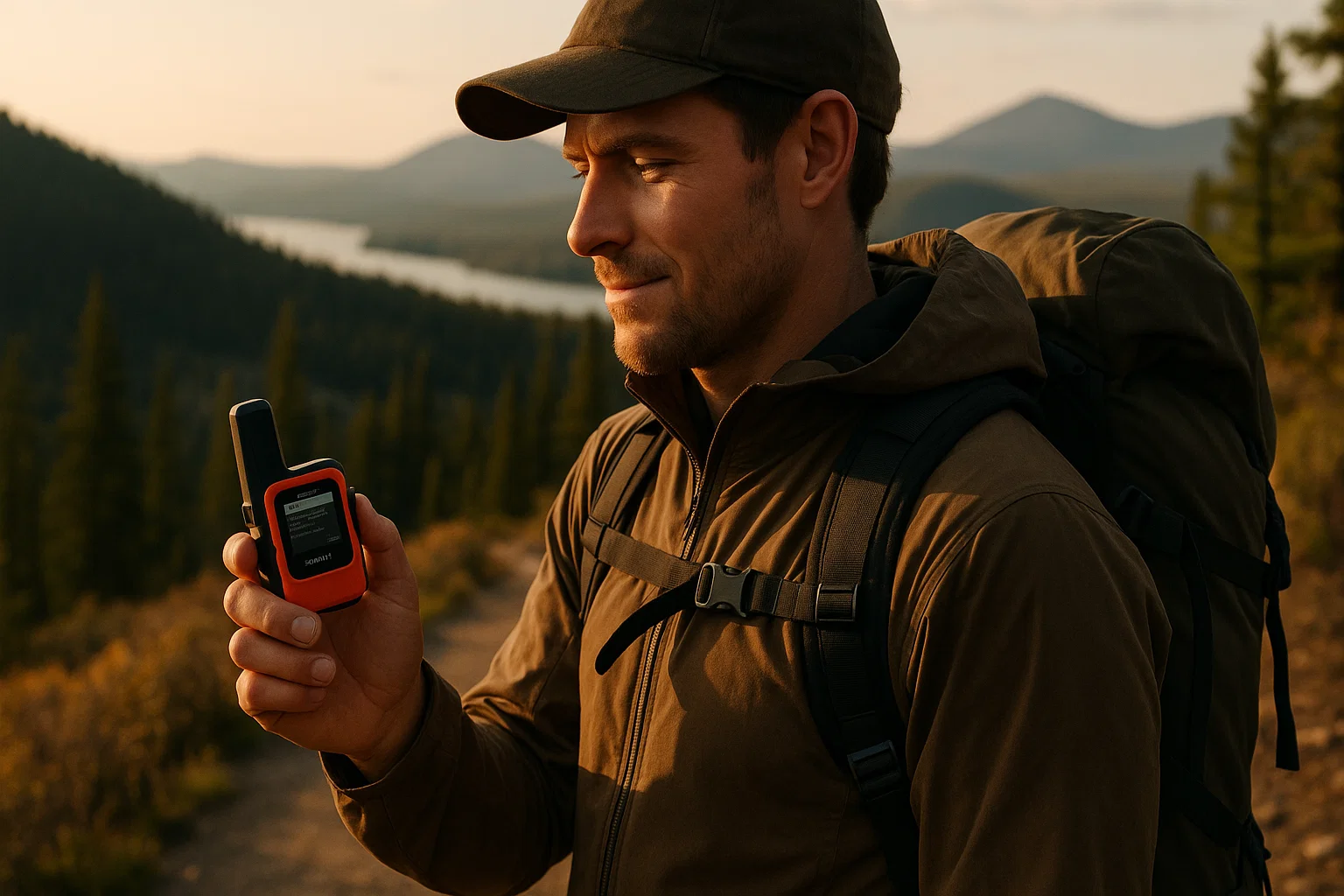
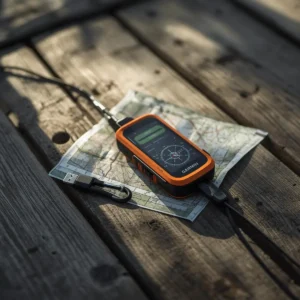
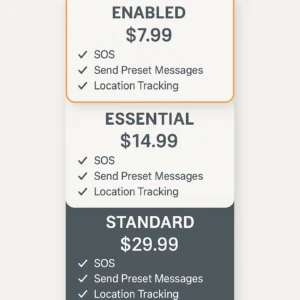
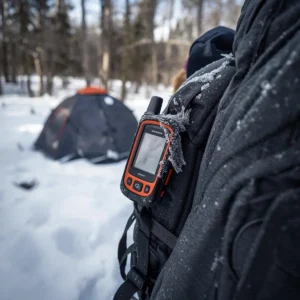
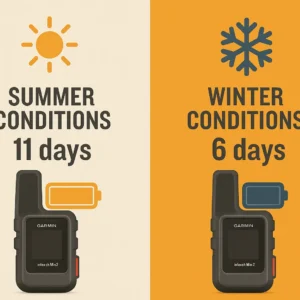
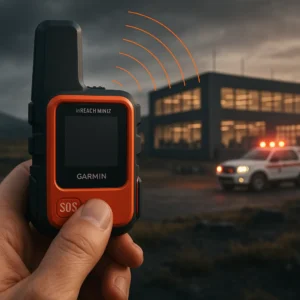
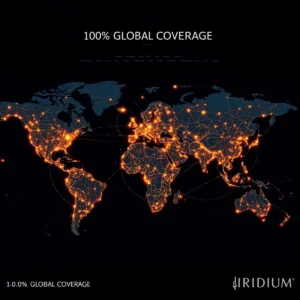
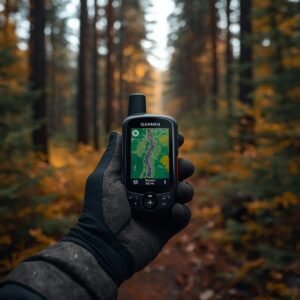
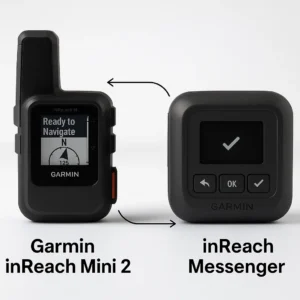
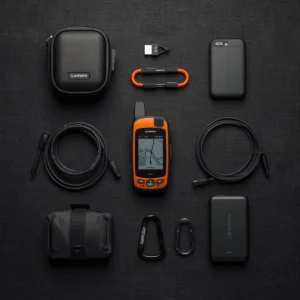



Leave a Reply